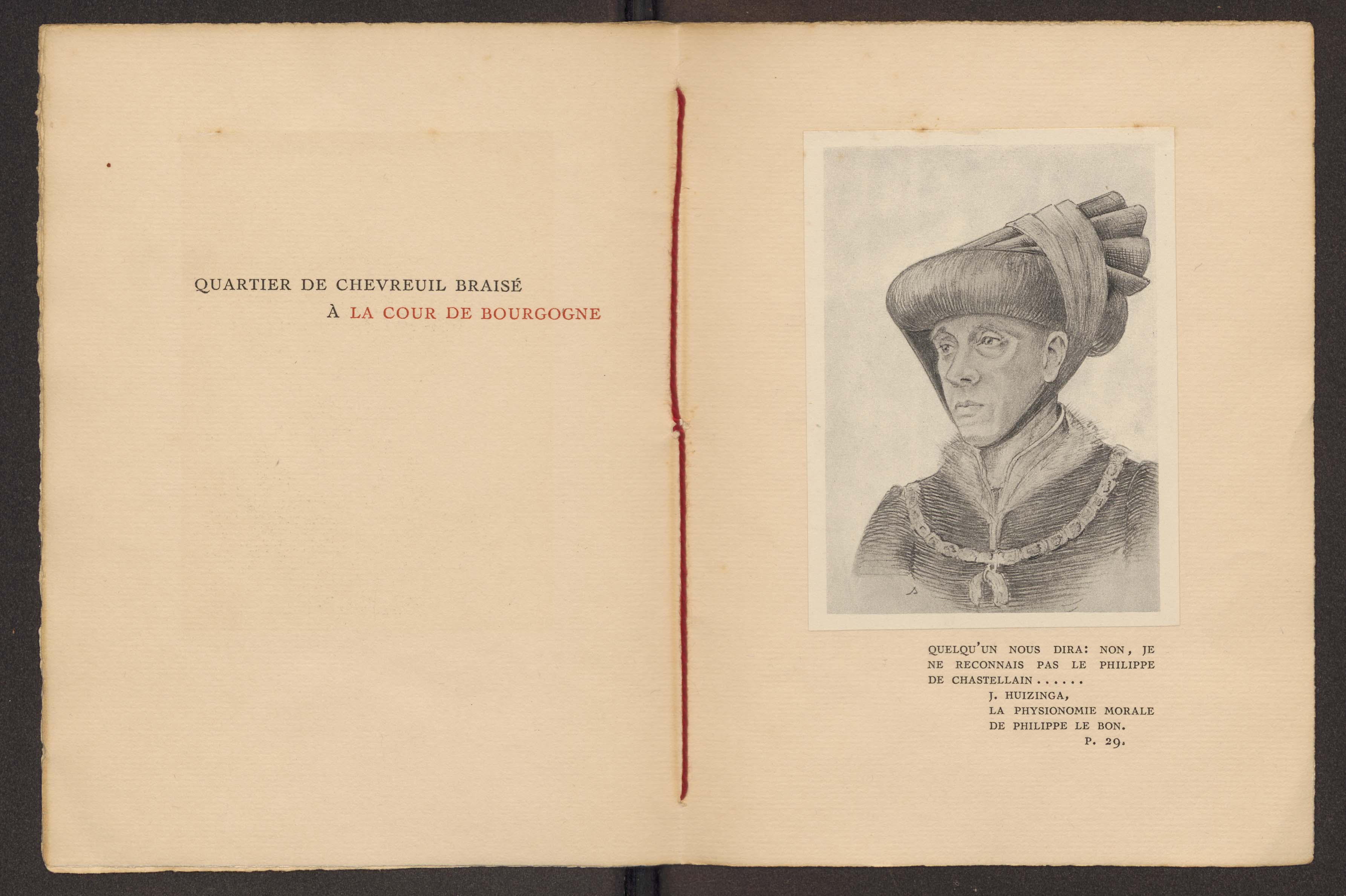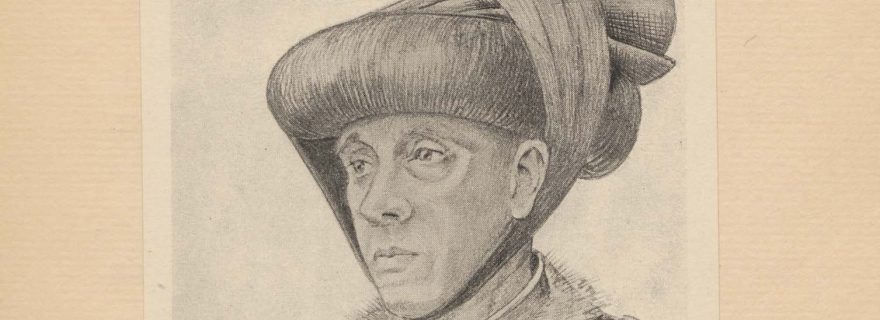Portraits of Huizinga and the Dies Natalis of Leiden University
The most requested portraits of Huizinga are located in the printed menu of the festive dinner to celebrate the Dies Natalis of Leiden University on February 8, 1933.
The most requested portraits of the famous Leiden professor Johan Huizinga are published in a printed booklet of great rarity. Only the University Library and the Academisch Historisch Museum in Leiden own a copy. They are in the printed menu of the festive dinner to celebrate the Dies Natalis of Leiden University on February 8, 1933. On that day Huizinga became "Rector Magnificus" (i.e. Chancellor) of the university for one year (as was the custom). According to tradition one of the participants had to design the menu. Huizinga’s personal friend, J.A.J. (Ton) Barge, professor of anatomy, had the original idea of portraying Huizinga as Rector Magnificus and as six historical figures. Each course and each portrait corresponds to one of Huizinga’s publications. The witty names of the dishes and the striking drawings must have been a great success at the dinner table. Had we been able to be there, we would have seen a most amused Huizinga.

Collection Leiden University Libraries (HUIZIN 2008)
The portraits were published for the first time in the proceedings of the conference in honour of the centennial of Huizinga’s birth in 1972. Since then there is a regular demand for these drawings, a reason to publish the entire booklet at this time in digital format. The original drawings are still with the Huizinga family.
The references to the menu courses are self-evident. The menu opens with Huizinga as Rector Magnificus. Regarding the other portraits: the boy scout (Dutch: verkenner) refers to Cultuurhistorische verkenningen (Explorations in Cultural History), Erasmus of course to Erasmus, Philip the Good to The Waning of the Middle-Ages, Uncle Sam to Man and the masses in America, and Lorenzo de’ Medici to Huizinga’s studies of the Renaissance. The eighteenth-century gentleman, powdered and with a tache de beauté, can be a reference to Huizinga’s first article about the play-element of culture.
Barge has drawn his signature in the form of two small legs, because he, Huizinga and three other professors formed a walking club, “De Beentjes” (“The Legs”). The portrait of Philip the Good is accompanied by a sophisticated joke. Barge gives here a variation of a quote by Huizinga himself, that it was impossible to recognise the portrait of Philip the Good in the works of the Burgundian chronicler Georges Chastellain. In translation: “Somebody will tell us: no, I don’t recognise Chastellain’s Philip”.


